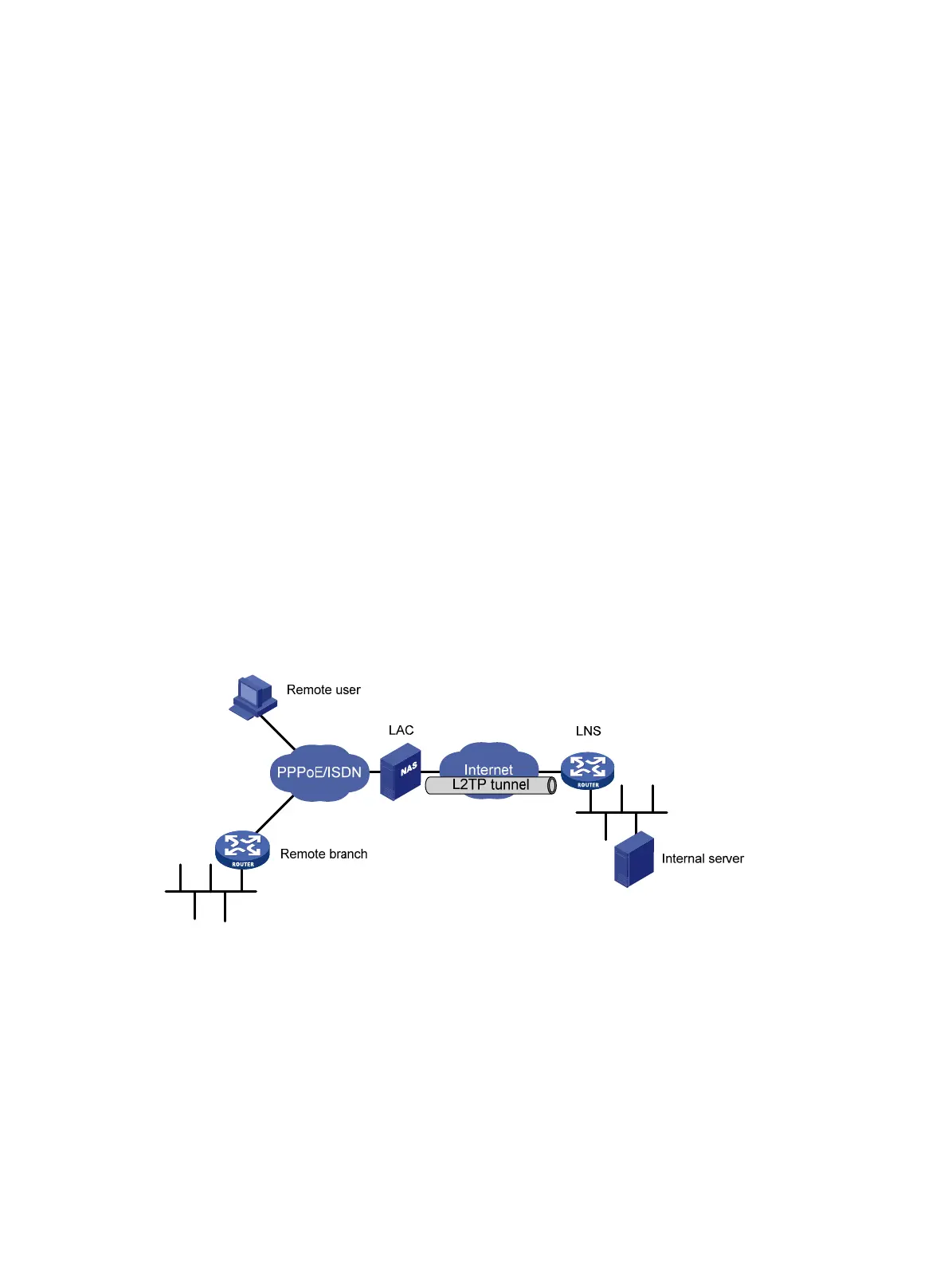253
Configuring L2TP
Overview
A VPDN is a VPN utilizing the dial-up function of public networks such as ISDN or PSTN networks to
provide access services for enterprises, small ISPs, and telecommuters. VPDN provides an
economical and effective point-to-point method for remote users to connect to their home LANs.
VPDN technology uses a tunneling protocol to build secure VPNs for enterprises across public
networks. Branch offices and traveling staff can remotely access the headquarters' Intranet
resources through a virtual tunnel over public networks. Other users on the public networks are not
permitted access.
Main VPDN tunneling protocols are as follows:
• PPTP
• L2F
• L2TP
L2TP includes the benefits of L2F and PPTP and is the most widely used VPDN tunneling protocol.
L2TP (defined in RFC 2661) is a tunneling protocol that transmits PPP frames. It extends the PPP
model by allowing the Layer 2 endpoints that connect to users and PPP endpoints to reside on
different devices interconnected by a packet-switched network, such as Internet.
Typical L2TP networking application
Figure 88 VPDN built by using L2TP
As shown in Figure 88, a VPDN built by using L2TP comprises the following components:
• Remote system—A remote system is usually a remote user's host or a remote branch's routing
device that needs to access the VPDN network.
• LAC—An L2TP access concentrator (LAC) is a device with PPP and L2TP capabilities. It is
usually a NAS located at a local ISP, which provides access services mainly for PPP users.
An LAC is an endpoint of an L2TP tunnel and lies between an LNS and a remote system. It
encapsulates packets received from a remote system using L2TP and then sends the resulting
packets to the LNS. It de-encapsulates packets received from the LNS and then sends the
resulting packets to the intended remote system.
Usually, a PPP link is used in a VPDN application.

